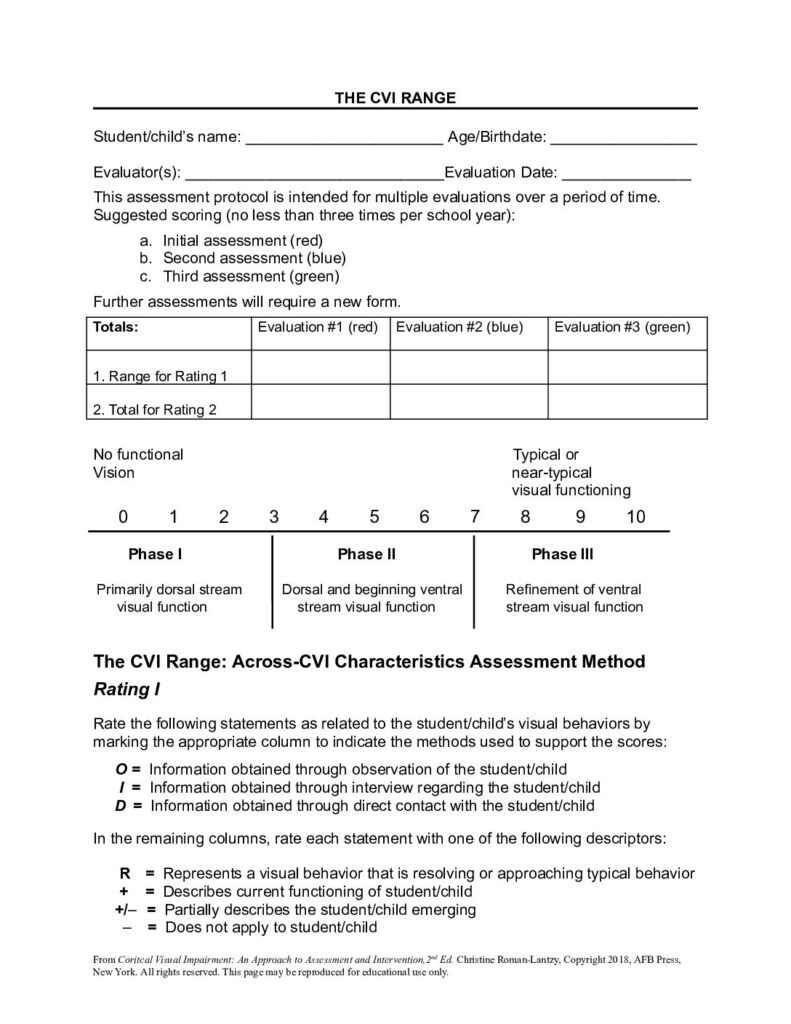The CVI Range Assessment (Roman, 2007, 2018) is a functional vision assessment desiged to investigate the visual and behavioral characterstics associated with CVI. It measures the degree of impact of CVI on a 0 – 10 continuium where 0 represents no visual function and 10 represents near typical visual function. Scores obtained from the CVI Range Assessment fall into one of three braod Phases, each with an overarching goal.
The CVI Range is completed based on parent interview (Roman, 1996), observation and direct assessment.
The CVI Range is used to:
- Determine present levels of functional vision
- Used to determine precise accomodations, materials and specialized methods
- Provides a common language to discuss the needs of individuals with CVI
- Can be used to measure progress in functional vision over time
- Can be used to guide program planning, such as IFSPs and IEPs
- Reliable and valid instrument Newcomb, 2010, Journal of Visual Impairment and Blindness, 2010
- CVI Range Reliability and Replication Study, Borchert, Roman, et al, Childrens Hosptial Los Angeles, 2021-

